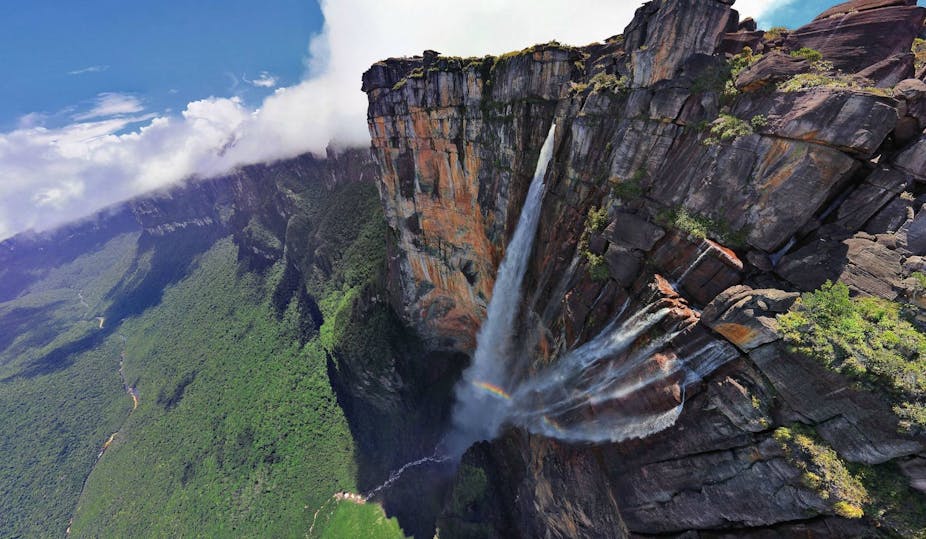Researchers working with the world’s most complete data on threatened species have pinpointed the most irreplaceable regions, whose existence is not only vital to species’ survival, but which are also unprotected by law.
The report, drawn up by scientists from France, Switzerland, the UK, Australia, US and the United Arab Emirates, pored over the data to map areas where threatened or unique species were present. What, if any, protection they were afforded by being designated as National Parks, UNESCO World Heritage Sites, or other forms of recognition.
Using the IUCN’s World Database of Protected Areas, the report – published in the journal Science – examined all 173,461 protected areas and 2,059 proposed protected areas. The researchers then checked for the presence of 21,419 vertebrate species found on the IUCN’s Red List of Threatened Species data, which encompasses 6,240 species of amphibians, 5,263 non-marine mammals, and 9,916 birds.
The regions, largely concentrated in southern and central America, tropical Africa, and Indonesia, were ranked according to their “irreplaceability factor”. This was calculated by combining the number of species found in a protected area with a measure of how dependent each species is on it. Those regions that represented the only areas where certain species, or many species, were found would therefore rank as more highly irreplaceable than others.
The study’s corresponding author Ana Rodrigues, from the Centre d’Ecologie Fonctionnelle et Evolutive in Montpellier, France, said: “We developed the irreplaceability measure to help identify a practical means for deciding where countries’ often scarce conservation resources should be spent. Hopefully it will help guide conservation priorities to which protected areas conservation efforts should be directed, and the priority of species within protected areas.”
She said that Venezuela’s Canaima National Park was the most species-rich region, a “spectacular landscape” perhaps helped by being “very remote and inaccessible”, while Columbia’s Sierra Nevada de Santa Marta was recognised as the top priority, most under threat region.

From the 21,419 threatened species, the report revealed that 1,922 amphibians, 1,096 non-marine mammals and 1,311 birds were globally threatened with extinction because of their species’ reliance on particular regions. These regions were themselves often under threat from human influences.
The study identified 137 protected areas covering 1.7m km2 as irreplaceable, and vital for the survival of 627 species, of which half were severely threatened. In many cases these include unique species found nowhere else on Earth, such as the critically endangered Laysan Duck (Anas laysanensis) of the Hawaiian Islands, or the 13 species of amphibians living only in Canaima National Park, Venezuela.
Many of these highlighted, species-rich or irreplaceable areas, such as Ecuador’s famed Galápagos Islands or Peru’s Manú National Park, are protected under the UNESCO World Heritage Convention. However more than half of the land identified is not. Among them are Tanzania’s Udzungwa Mountains National Park, Cuba’s Ciénaga de Zapata wetlands, and by this measure the world’s most irreplaceable site, Sierra Nevada de Santa Marta Natural National Park in Colombia.
In many cases, even where those sites are designated any protection is in name alone. These so-called “paper parks” are all too common. For example, the Páramo Urrao National Protective Forests Reserves in Colombia was founded in 1975, but without following up with any meaningful, practical measures or investment. To all intents and purposes, said chief exec of the Rainforest Trust, Paul Salaman, “it does not exist.”
Lucas Joppa, Research Fellow at Kent University’s Durrell Institute for Conservation Ecology who used models to map conservation, commended the study as a “fantastic analysis” of data that is the “gold standard” for biodiversity studies.
“For a site to be granted World Heritage or some similar protected status it must have outstanding value, and it is difficult to define how this can be shown. This paper provides a method to do so,” he said.
Joppa also pointed out that, as 91% of the World’s Heritage Sites fell into the study’s top 95% of areas deemed irreplaceable, the paper reinforces the incredible nature of these areas, and the rigour of the selection process.
Rodrigues said that this was the “tip of the iceberg” and that new regions and species were yet to be discovered. Whole taxa – such as plants – were not included in the study.
However, Kelvin Peh of Southampton University, said that the study’s definition of biodiversity was “very narrow”.
“A site can be irreplaceable for other reasons, such as the way it functions, its cultural or economic value. While this is important for the conversation of biodiversity, there are other perfectly valid reasons a site may be irreplaceable,” he said.
“Every area is irreplaceable to someone, because any area has its own ecological, political and cultural importance to them.”

